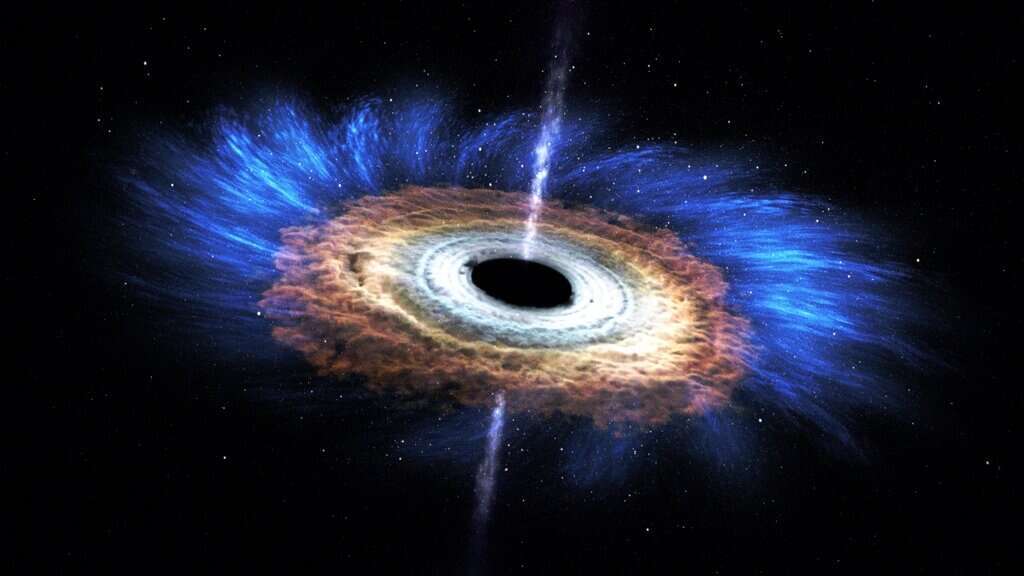
Supermassive black holes located in the centers of galaxies are the most massive objects in the universe. Their masses range from about 1 million to 10 billion solar masses. Some of these black holes also eject giant, superfine plasma jets at speeds close to the speed of light. The main way to discharge the energy of movement of these jets is to turn it into extremely high-energy gamma rays. However, the main author of the new study, Adam Leah Harvey, says: “The exact mechanism for forming this radiation continues to be a mystery.”
Jet should be discharged somewhere, and previous research has not led astrophysicists to agree on this issue. The main candidates for the role of places where jet discharge occurs are two areas consisting of gas and light that surround black holes. These regions are referred to as the broad line region and the molecular torus, respectively.
The black hole jet is potentially able in either of these two regions to convert optical and infrared radiation into high-energy gamma rays due to its own energy. The new study, led by Harvey’s team with NASA funding, helps resolve existing controversies on the issue by providing strong evidence that the jets mainly release their energy in the molecular torus rather than the broad-line domain.
The region of wide lines is closer to the center of the black hole, at a distance of about 0.3 light years. The molecular torus is located much further – at a distance of over 3 light years. While all these distances seem gigantic for an ordinary person who is not related to astronomy, Harvey’s work shows that “energy dissipation occurs at a much greater distance from the black hole than previously thought.”
In order to reach this conclusion, Harvey applied a standard statistical technique called bootstrap to the observation data of 62 jets of black holes. The resulting distribution of the value, which is the criterion for assigning the energy dissipation in the system to the molecular torus or the region of wide lines, almost ideally surrounded the value corresponding to the energy dissipation inside the molecular torus. A significant advantage of this study using statistical methods is the independence of conclusions from the model used, Harvey explained.




